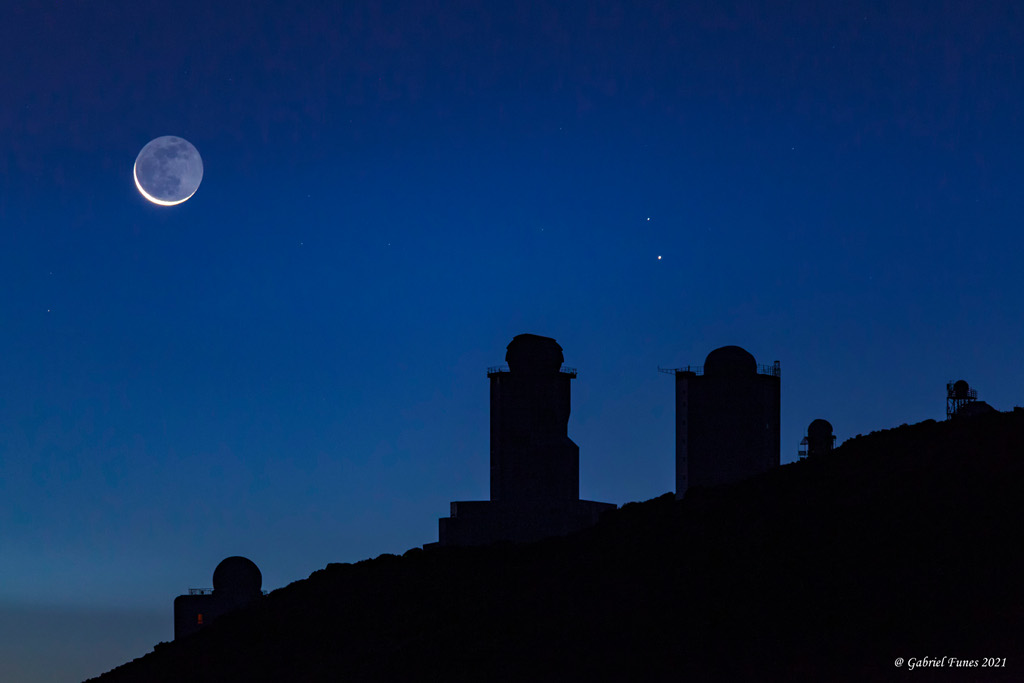墨丘利和达芬奇的光芒
(原标题: Mercury and the Da Vinci Glow)
2021-07-10
浏览次数: 188
7月8日清晨,日出者看到水星靠近东方地平线上的旧月亮。在那一天,明亮的行星,月球夜侧微弱的辉光,以及阳光照耀下的新月,在加那利群岛特内里费岛的泰德国家公园的黎明前的天空中被捕捉到。在地球的天空中,这颗稍纵即逝的内行星从未远离太阳,它在晨曦中发出最明亮的光芒。水星位于金牛座zeta星的下方,靠近天牛角的尖端。当然,月球的灰白色的光是地球的光,地球的光从月球的夜晚反射回来。500多年前,列奥纳多·达·芬奇(Leonardo da Vinci)就地球海洋反射的阳光照亮了月球黑暗的表面,描述了地球的光辉。在前景中等待黎明到来的是泰德天文台的太阳哨兵,也被称为THEMIS, VTT和GREGOR太阳望远镜(从左到右的大圆顶)。
查看原文解释
On July 8th early morning risers saw Mercury near an old Moon low on the eastern horizon. On that date bright planet, faint glow of lunar night side, and sunlit crescent were captured in this predawn skyscape from Tenerife's Teide National Park in the Canary Islands. Never far from the Sun in planet Earth's sky, the fleeting inner planet shines near its brightest in the morning twilight scene. Mercury lies just below the zeta star of the constellation Taurus, Zeta Tauri, near the tip of the celestial bull's horn. Of course the Moon's ashen glow is earthshine, earthlight reflected from the Moon's night side. A description of earthshine, in terms of sunlight reflected by Earth's oceans illuminating the Moon's dark surface, was written over 500 years ago by Leonardo da Vinci. Waiting for the coming dawn in the foreground are the Teide Observatory's sentinels of the Sun, also known as (large domes left to right) the THEMIS, VTT, and GREGOR solar telescopes.
© Gabriel Funes
